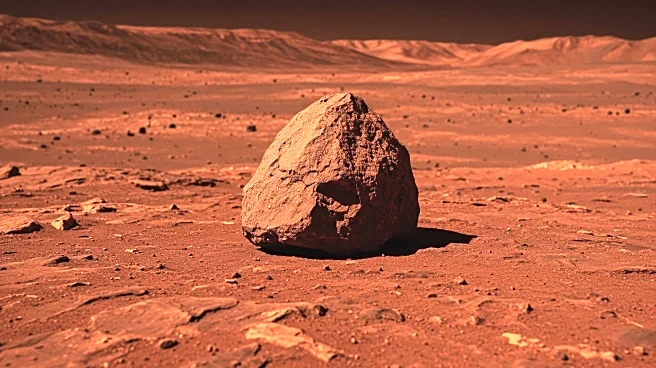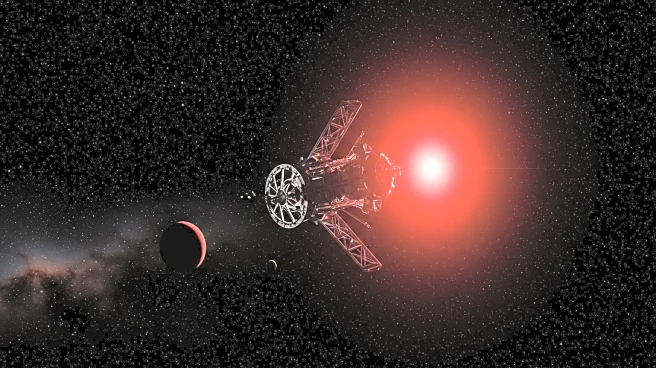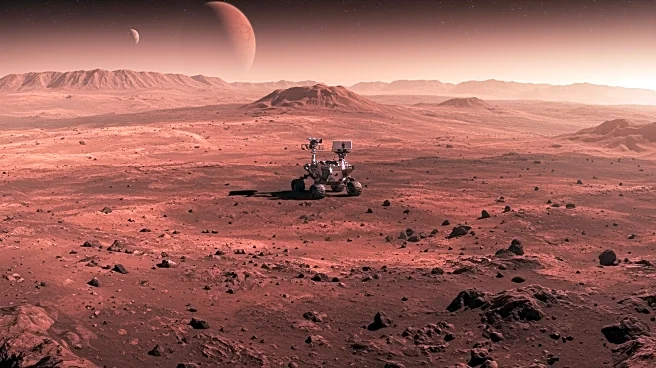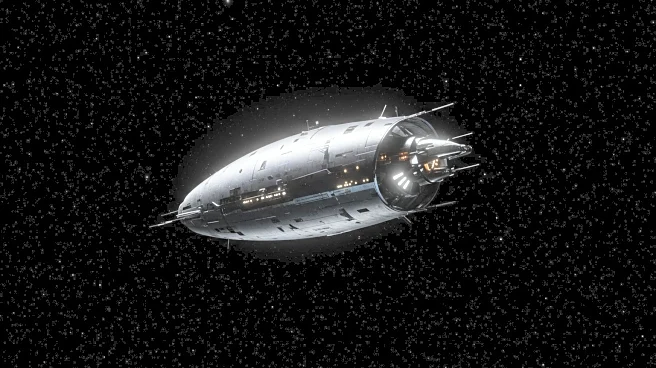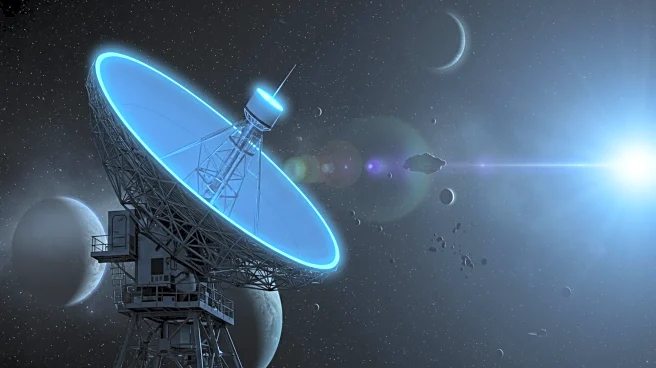What is the story about?
What's Happening?
NASA's Perseverance rover has captured an image of a peculiar rock on Mars that resembles a weathered battle helmet. The rock, named Horneflya, was photographed by the rover's Mastcam-Z instrument on August 5, 2025. It features a pointed peak and a nodular texture, intriguing scientists with its spherule composition. These spherules may have formed through groundwater passing through sedimentary rocks, although their exact formation process remains uncertain. The discovery adds to Perseverance's collection of unusual rock shapes, contributing to the understanding of Martian geology and environmental history.
Why It's Important?
The discovery of the helmet-shaped rock on Mars is significant for understanding the planet's geological history and environmental processes. Such findings help scientists piece together how wind, water, and internal processes have shaped the Martian landscape over billions of years. The study of these rocks can provide insights into past water activity and potential habitability, which are crucial for future exploration and the search for life on Mars. The ability of the Perseverance rover to capture high-resolution images of these features aids in the ongoing scientific investigation of the Red Planet.
Beyond the Headlines
The helmet-shaped rock exemplifies the phenomenon of pareidolia, where the human brain perceives familiar patterns in random visual data. This discovery highlights the challenges and opportunities in interpreting Martian geology, as scientists must differentiate between actual geological formations and visual illusions. The study of such rocks not only advances scientific knowledge but also engages public interest in space exploration, fostering curiosity and support for ongoing missions to Mars.
AI Generated Content
Do you find this article useful?




